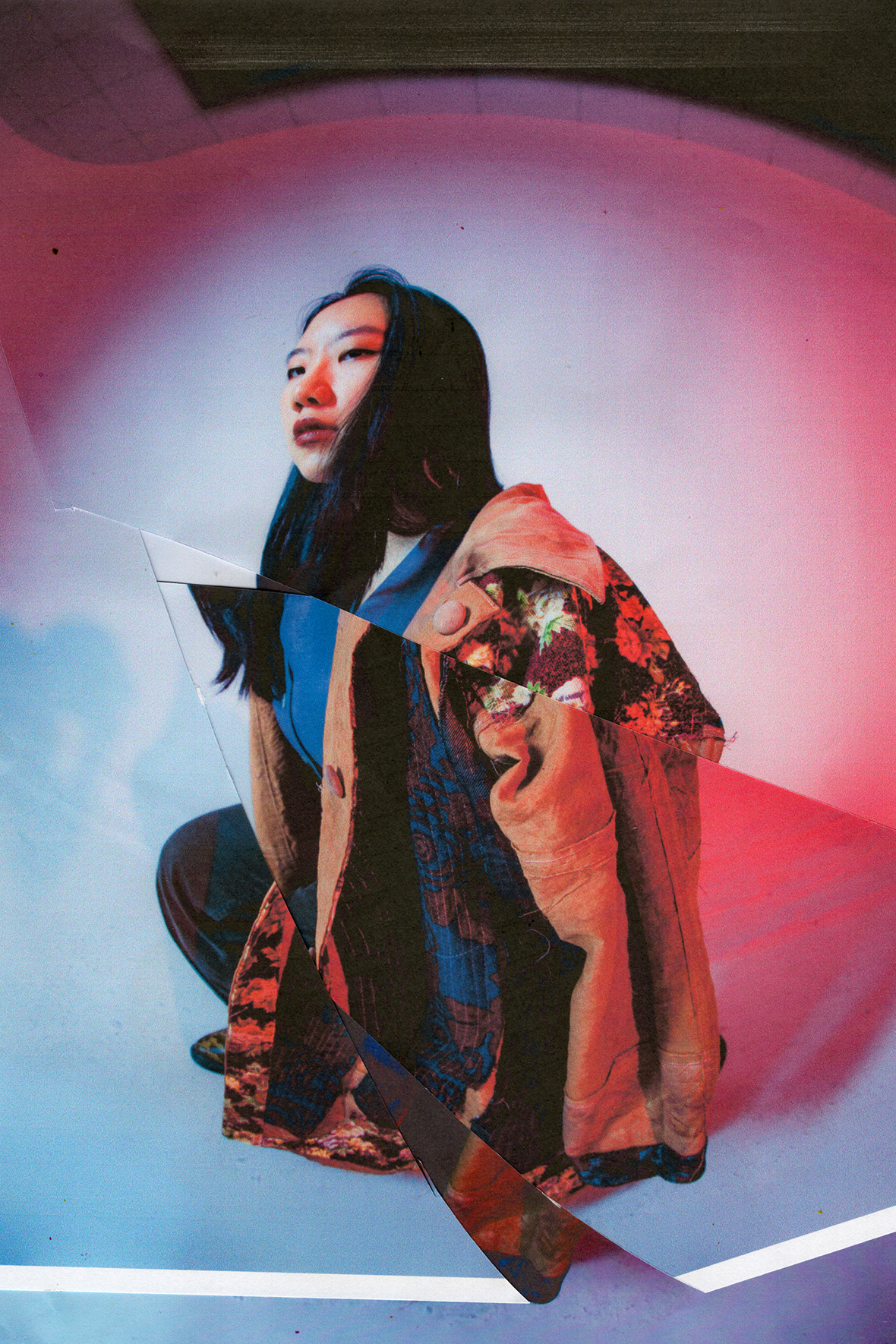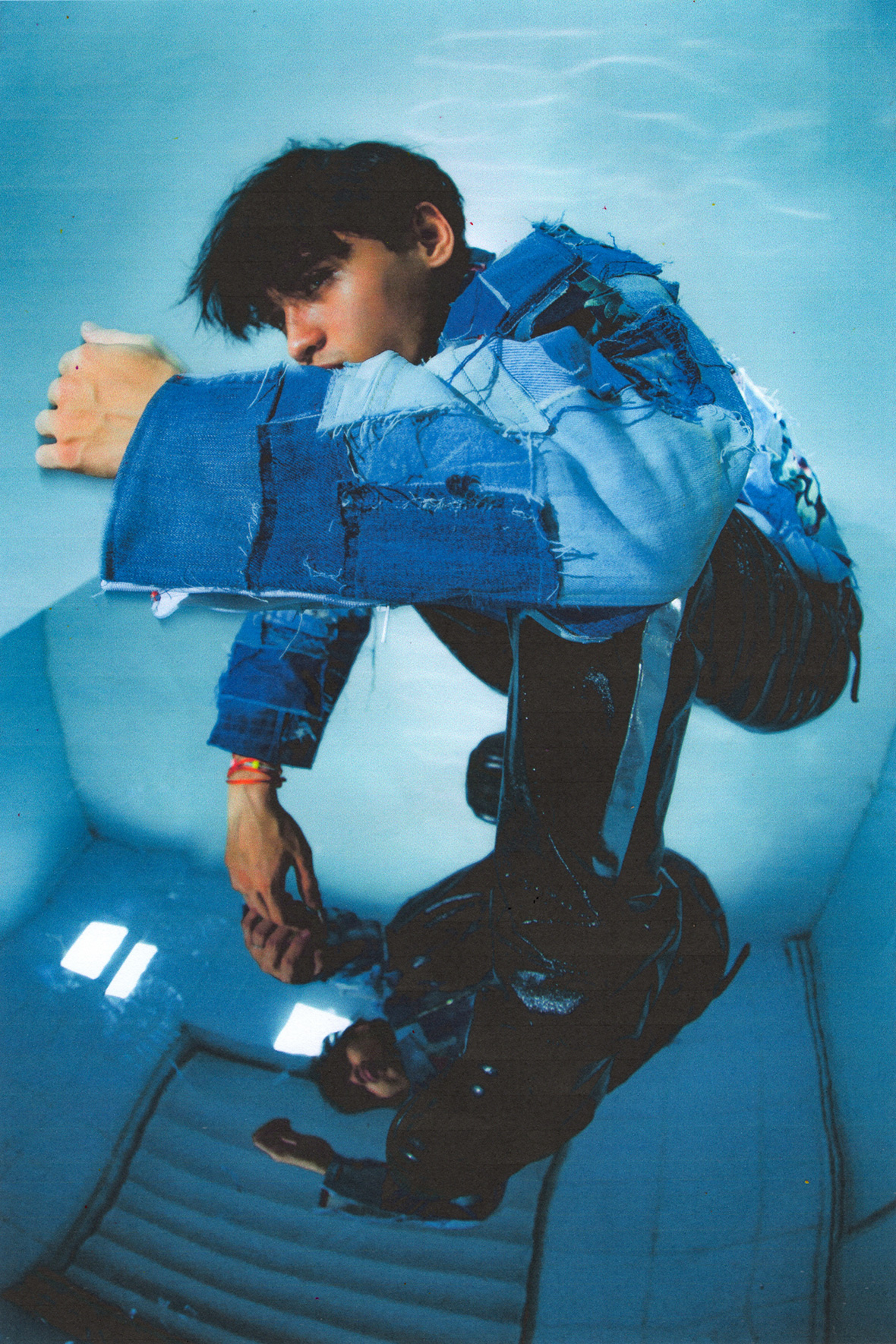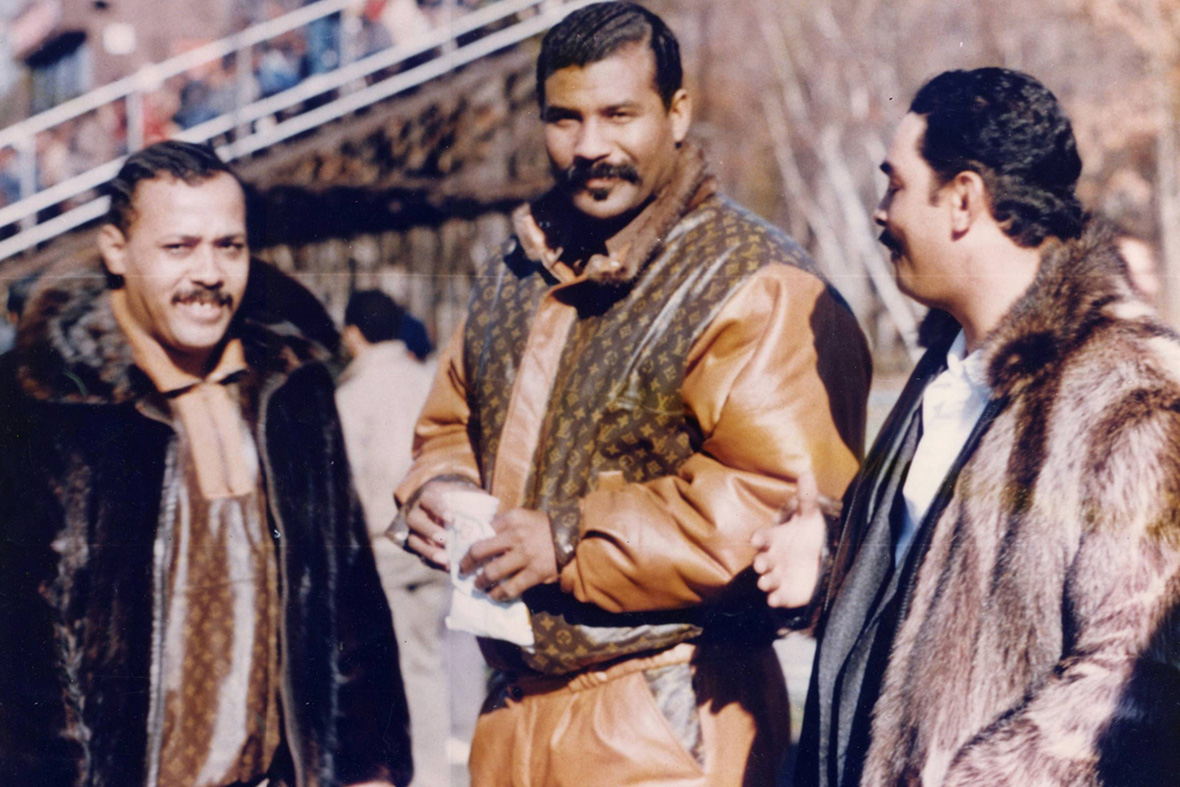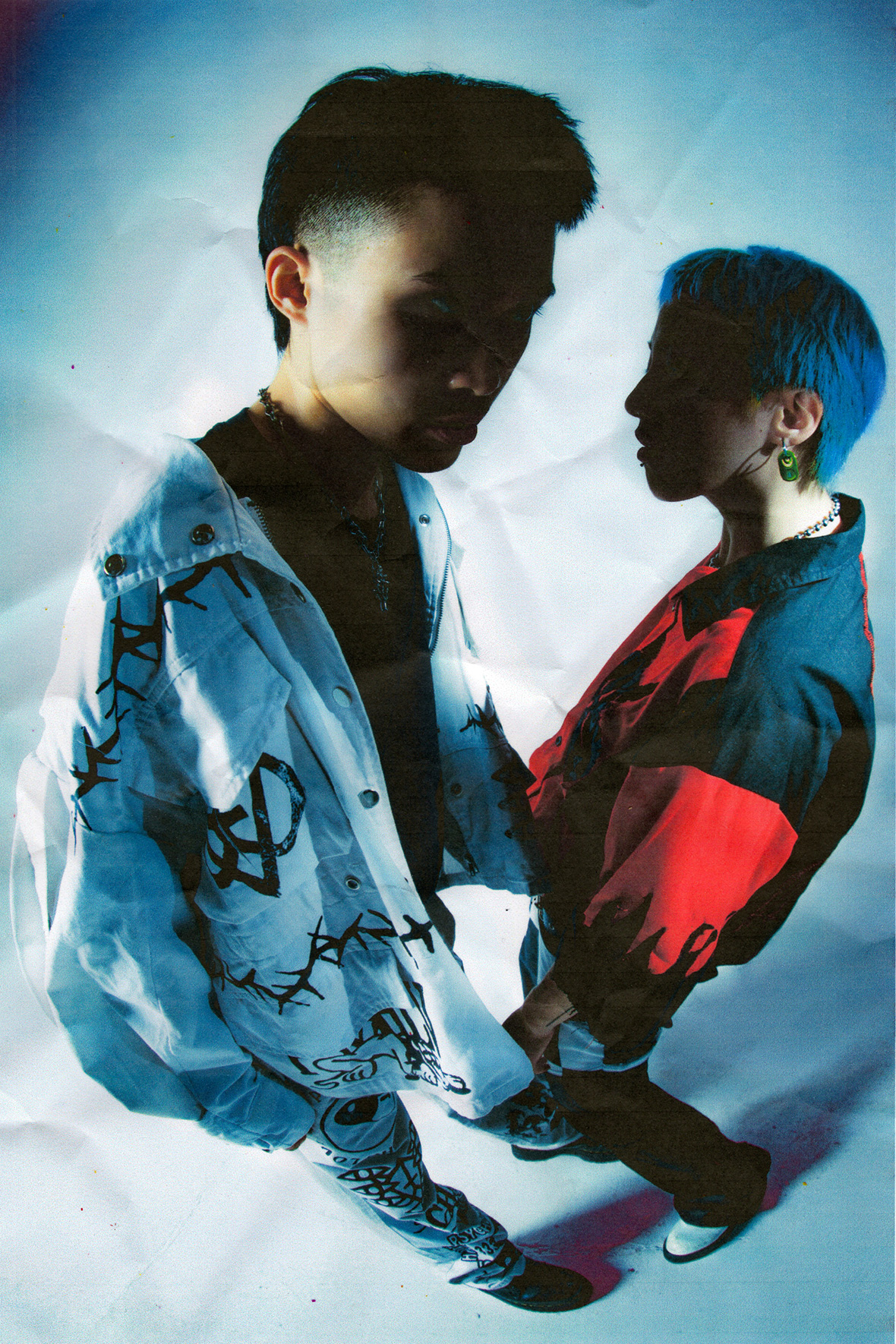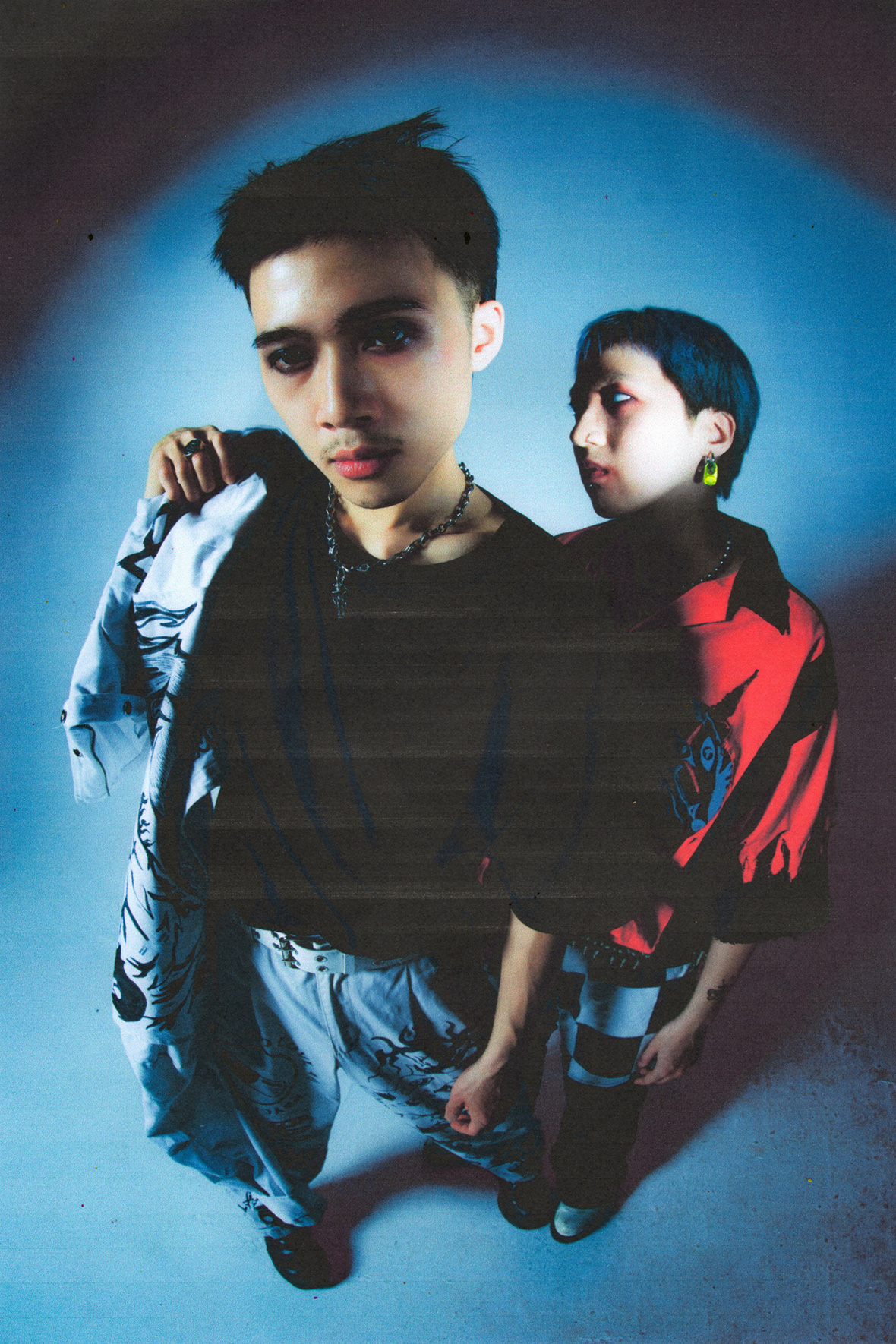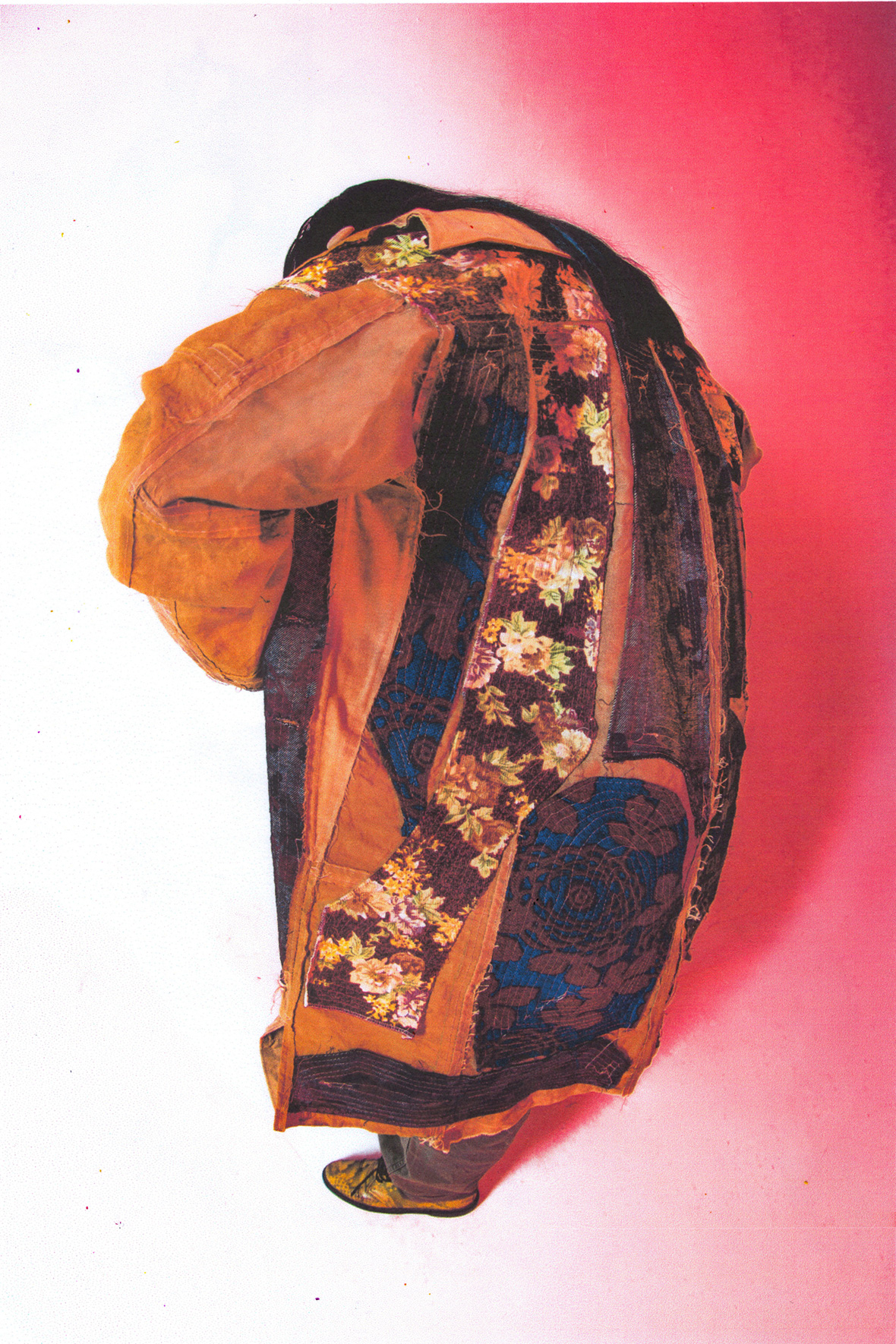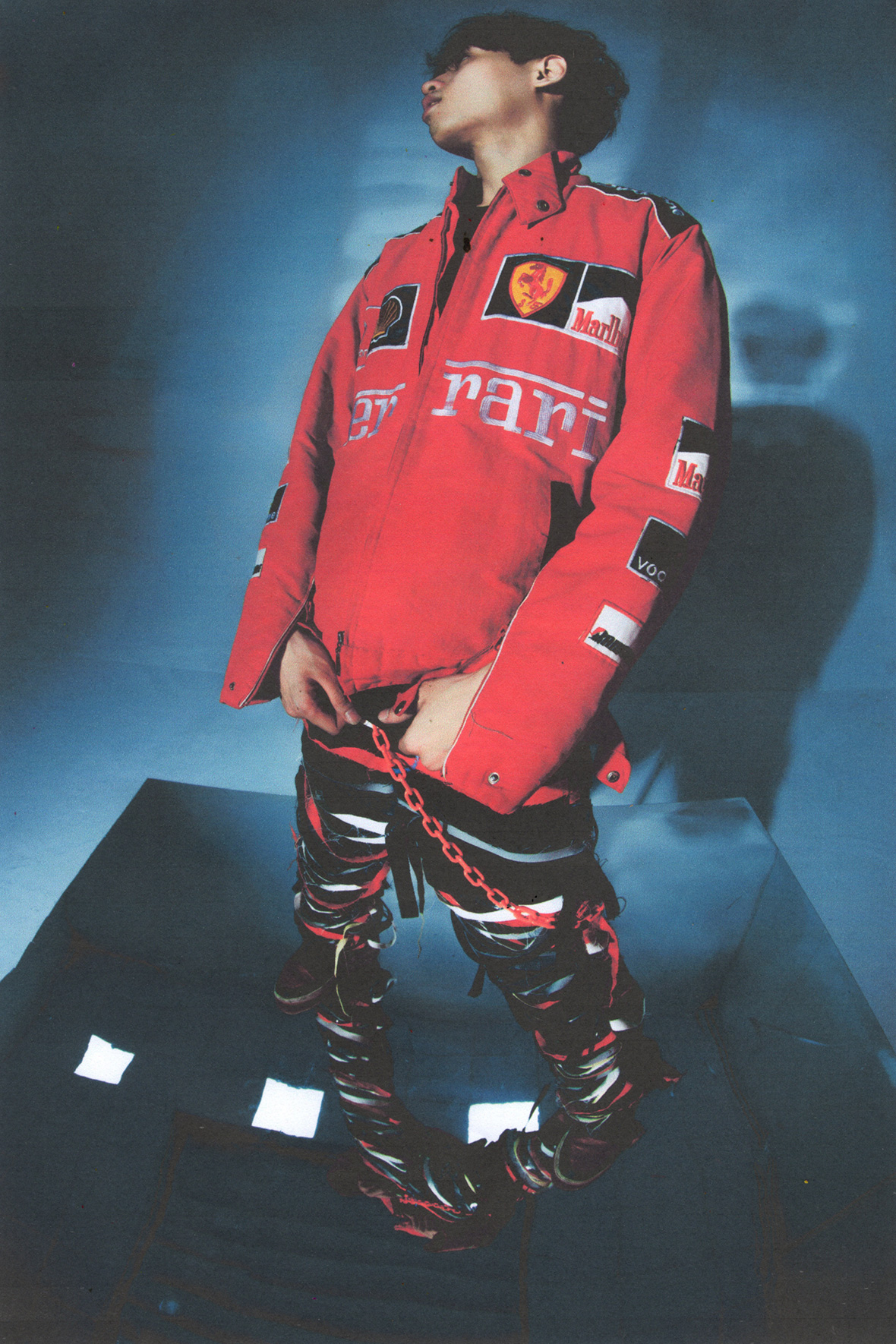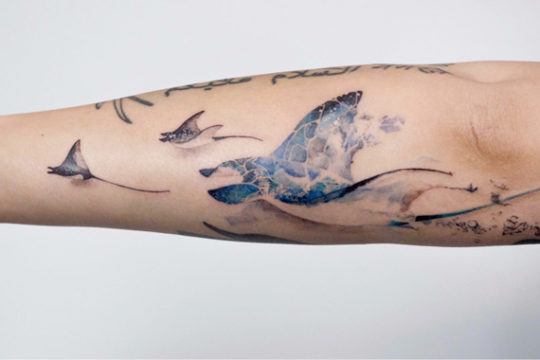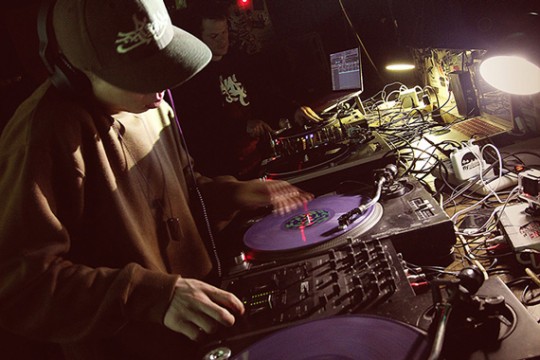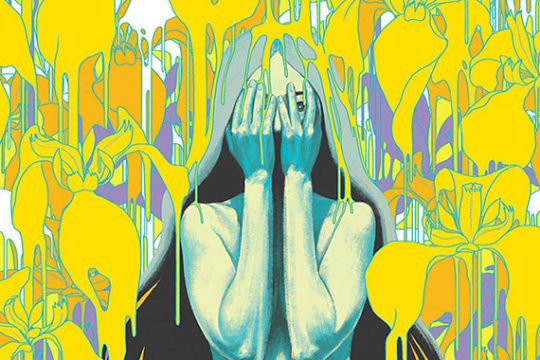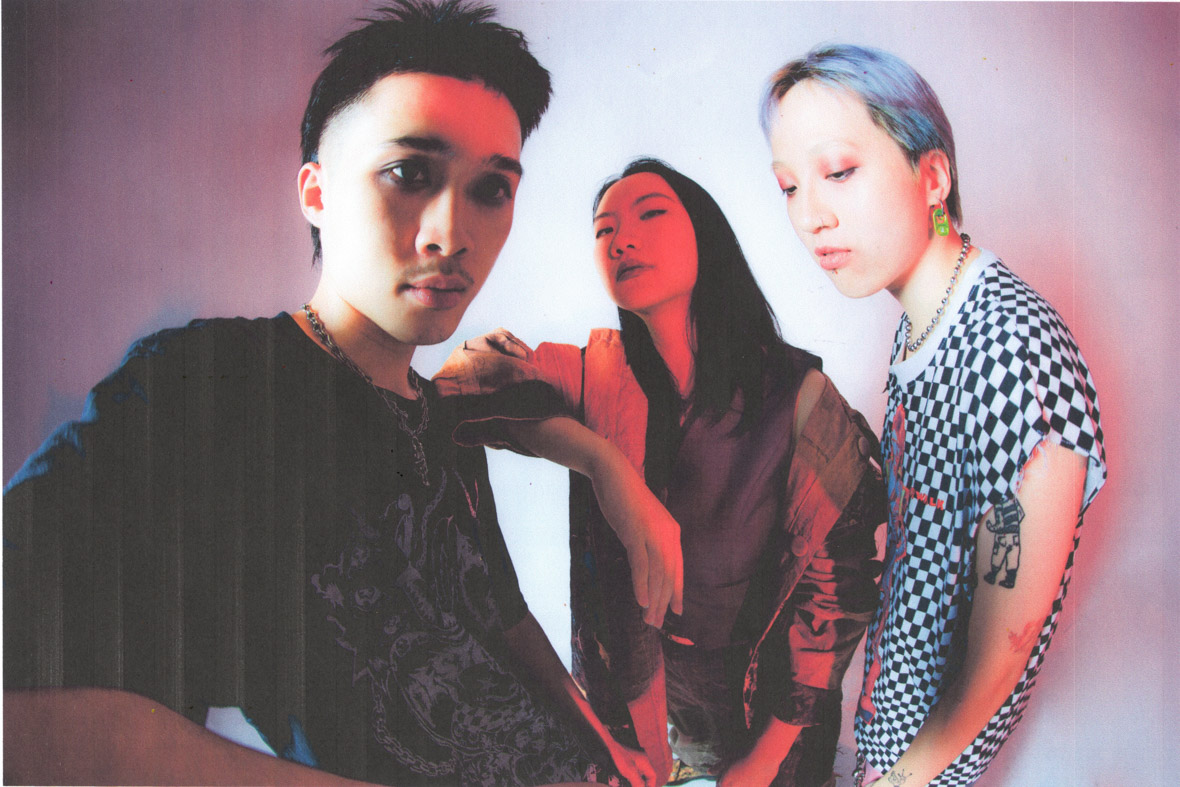
As we look back on a tumultuous year, it’s clear that parts of Southeast Asia, like much of the world in general, have been left in a trail of destruction. Typhoons of increasing strength and frequency have washed away areas in Vietnam and The Philippines. Thailand is bursting at the seams with plastic-waste pollution, which skyrocketed as a result of the coronavirus pandemic. And Jakarta continues sinking faster than any other city on Earth while its rainforests are set on fire. But what does any of this have to do with the latest T-shirt you wear? As it turns out, a lot.
回顾过去动荡的一年,世界上大部分地区都遭受了环境和经济的重创,许多东南亚国家也一样——频繁袭击的强台风彻底摧毁了越南和菲律宾的部分地区;在泰国,新冠肺炎疫情导致当地的塑料垃圾污染达至崩溃边缘;雅加达成为全球下沉最快的城市,大片热带雨林被付之一炬。
可是,这些问题与你有什么关系吗?确实有,而且可以说是息息相关——你身上的一件快时尚品牌 T 恤,可能就是“万恶之源”。
The Consequences of Fast Fashion
The fashion industry accounts for 10 percent of the world’s carbon emissions, according to the Intergovernmental Panel on Climate Change. It uses 1.5 trillion liters of water annually. It’s a major source of chemical waste and plastic pollution in the ocean. This is all due to things like the use of petroleum-based fabrics such as polyester, large amounts of wasted product, expansive supply chains, and untreated wastewater from textile factories.
With the fashion industry creating such grim environmental realities, it’s reaffirming to see a rise in upcycling and custom clothing, particularly in Vietnam, where the momentum is growing at an outsized pace compared to most neighboring countries.
1/ 为什么要“反快消文化”?
在制造时尚的同时,时尚产业也正在制造庞大的污染和浪费。根据联合国政府气候变化专门委员会的数据,时尚产业占世界碳排放量的 10%,而每年用水量更是高达 1.5 万亿升。此外,由于聚酯纤维等石油基织物的使用、大量废弃产品的流出,以及不断扩张的供应链等问题,这也导致了海洋化学废物和塑料污染的主要来源。
现实环境如此严峻,时尚行业有着不可推卸的责任,升级回收(Upcycling)和定制服装开始风行,与周边大多数国家相比,越南在这一方面显得很有“超前意识”。
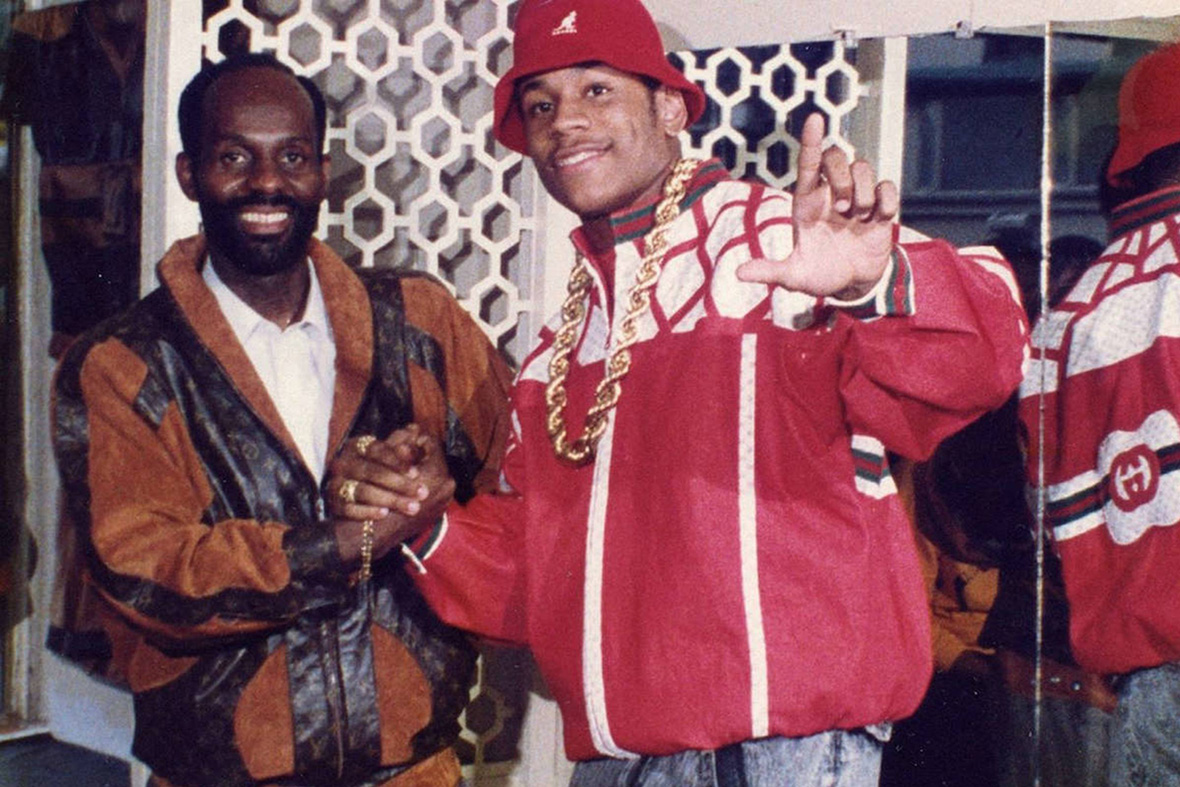
Upcycling is basically just recycling with a fancy name. It means taking an older product and reusing it for something new. So that old jacket you love with a big hole in it? Instead of throwing it out, you can repurpose it into a new shirt or bag. It’s not exactly a new concept though. In the past, sewing was a more integral part of our lives and mending clothes was more common than buying new ones. But one of the most notable examples from modern history before the term “upcycling” even existed is probably Harlem’s Dapper Dan in the 1990s. The Black designer was taking brand name clothes like Gucci and Louis Vuitton from customers and redesigning them into new fits and styles. Although Dapper Dan was sued for the practice back in the day, he’s now celebrated by the fashion industry, with big-name brands seeking out official collaborations with him.
你钟爱的那件旧夹克上破了个大洞?那不如把它重新加工,变成一件新衬衫或一个新手袋,而不是一扔了之——这就是升级回收,其实也就是指“回收利用”,利用旧产品制作新产品。虽然用词新鲜,但这并不是什么新奇的发明,在过去人们也经常“打布丁”,缝缝补补比买新衣服更常见。
但是,早在“升级回收”这个词出现之前,时装界便有一个著名的例子,那就是 1990 年代的 Dapper Dan。这位黑人设计师从顾客手中收集 Gucci 和 Louis Vuitton 等名牌服装,通过重新加工设计,变成全新款式。在过去,他曾因为这种做法而被起诉,但现在却备受时尚界的追捧,甚至有许多著名品牌前来邀请他一起合作。

Upcycling and custom designs are blowing up now in Vietnam. To see how fast things are growing in the country, you can look to the range of local brands that specialize in upcycling and customizations. There’s the casual wear of The Vandal; the Viet-punk look of 247 Art Club; the updated traditional garbs of Ugly Born; and the high-fashion wear of Môi Điên. And this doesn’t even account for individuals making clothes for themselves and friends, with no brand in mind. Perhaps the best spot to go at the moment to find out what’s bubbling underground is the Vietnamese 1 of 1 Fashion Group, a spot dedicated to creating a community around custom and upcycled clothing.
现在,升级回收和定制设计在越南迅速兴起,其受欢迎的程度从专门从事升级回收和定制设计的品牌就可见一斑:主打休闲着装的 The Vandal、 越南朋克风格的 247 Art Club、复古服工装风潮的 Ugly Born;还有专注高级时装的 Môi Điên……林林总总,而这还未包括那些没有成立品牌,只给自己和朋友做衣服的个体设计师。
而如果你想要了解越南的地下流行时尚,1 of 1 Fashion Group 是最合适的地方,这是一个致力于打造定制服装和升级回收服装的社区。
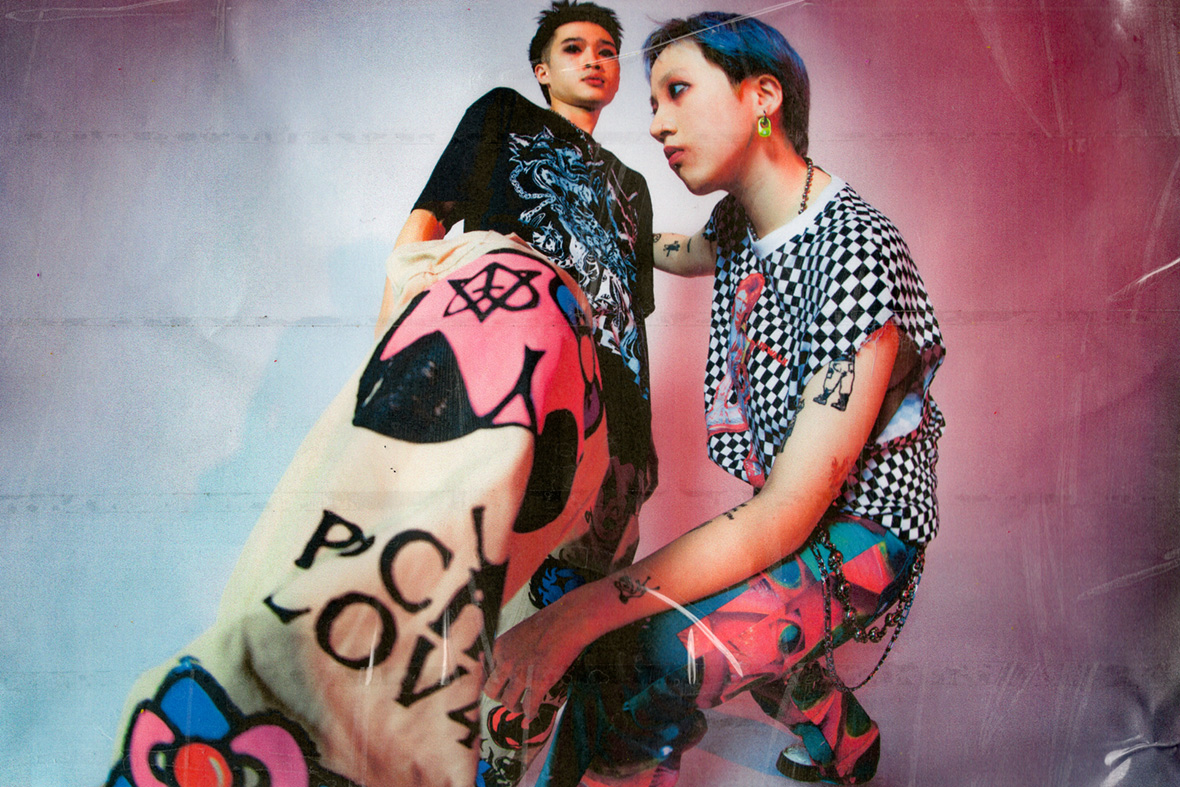
Custom Made
Founded by Hoang Anh Nguyen and Đức Thành, two upcycling enthusiasts from Hanoi, 1 of 1 is a place to share ideas, share work, talk about production methods, and spread the gospel of upcycling. It’s a meeting space for creators and customers alike. Nguyen is currently studying fine art and never expected to get involved with fashion, but when she met Đức, he taught her how to sew, and they’ve been making artsy clothes together ever since. “We don’t consider our work as a brand or anything like that,” she says. “We’re just a clothing shop reworking or destroying your old clothes. I’m always asking my friends for old clothes. Throw them away to me; I’m a hoarder!”
“All we do is recycle old clothes because we’re thinking about what we can do to protect the environment,” Nguyen adds. “ I’m not an environmental activist, but I do care about the environment, and I hate how the fast fashion industry works.”
2/谁在“逆势而为”?
“1 of 1”由两位来自河内的升级回收爱好者 Hoang Anh Nguyen 和 Đức Thành 创立,是一个分享创意与作品、讨论生产工艺和推广升级回收的地方,设计师和顾客可以在这里见面交流。Hoang Anh 正在大学学习美术,她从未想过会涉足时尚行业,但是自从认识 Đức 并学会缝纫后,他们就经常一起创作艺术服装。她说:“我们从来没有把作品当作是品牌或之类的东西。我们只是一间专门加工或毁掉旧衣服的服装店。我常常向朋友要旧衣服。把不要的衣服都给我吧,我是个囤积狂!”
Hoang Anh 又补充了一句:“我们的目的只是为了回收旧衣服,因为我们想为环保出一份力。我不是一个环保活动家,但我关心环境,同时很反感快时尚行业的运作方式。”
Thrifting culture is also widespread in Vietnam and has proven to be a quick way to enter the fashion industry with very little capital. Creatives with a good eye can buy a piece they find for a dollar and flip it for double or triple that. A lot of people sell secondhand goods and many have started their fashion careers that way. Phương Vũ from Vietnamese creative collective Antiantiart, an artist widely known in fashion circles here, got his start selling secondhand goods online. Many brands sell their own designs alongside thrifted pieces. “I definitely loved going to the thrift shop before I ever thought about making my own clothes,” Ngyuen from 1 of 1 says.
“This upcycling movement, which grew out of streetwear and thrifting culture, is really democratic, in the way a customer who isn’t professionally trained can be a part of the design process,” says Ngoc Ha Thu Le, a sustainable fashion designer and blogger who was born, raised, and educated in Hanoi. “You don’t need to understand the techniques because you have pieces that are readymade, you just mix them together with basic sewing skills. It can be really empowering; they’re not just consuming but creating too. They may not even understand that what they’re doing is sustainable.”
The movement isn’t strictly, or even mainly, about the environment, but it dovetails with social and technological changes, as well as recent fashion trends. The antipathy toward fast fashion is widespread. With people now being exposed to styles from every corner of the world, a growing desire to dress expressively and with individuality is only to be expected. Customers no longer have to wait for the next season when the fashion gods reveal what’s cool. They can step outside these commercial cycles and dress on their own terms.
“I don’t care about the latest hype; I want my pieces to be timeless, to be appreciated forever,” says Hoang Duy Minh, who founded the Rockboy Clique brand about five years ago. Duy primarily uses new fabric for his work and specializes in customizing old pants. The Hanoi designer leans toward streetwear but bristles at being pigeonholed. “There are a lot of styles in Vietnam but I don’t think about what category I fall into. I just do my thing, I make clothes as a passion. I just want to make you feel good about the clothes you’re in.” He doesn’t upcycle much, preferring instead to use new materials for most pieces, but he follows the same ethos, placing an increasing value on vintage pieces and how they could be reused. “You can take pieces from your archive and deconstruct them and you have something no one else in the world has.” Escaping from the hype cycle can only be a good thing.
越南是一个有着节俭传统的国家,因此,很多人可以凭借微薄的资本,快速进入时尚产业。独具眼光的创意人可以用一美元买到一件衣服,然后以两倍或三倍的价格售出。很多创意人都在卖旧货,其中有很多人就是这样开始自己的职业生涯的。来自 Antiantiart 的 Phương Vũ 是当地时尚圈一位有名的艺术家,他就是靠在网上卖旧货起家的。和其他许多品牌一样,他们在出售自有商品的同时也会出售旧货。“我在自己做衣服之前,也一直很喜欢去逛旧货店。”来自 1 of 1 的 Hoang Anh 说道。
无独有偶,在河内出生、长大和接受教育的 Ngoc Ha Thu Le 是一名可持续发展时装设计师和博主,她说道:“这个地区由街头服饰和节俭文化发展起来,面向大众且很平易近人,即使没有受过专业训练的顾客也可以参与设计。你甚至不需要掌握复杂的制衣工艺,因为可以直接使用成衣为材料,你要做的只是用简单的缝纫技能,把这些材料拼贴缝合。这是一种真正的赋能,顾客不仅是在消费,也是在创造,虽然他们甚至不知道自己的所作所为是在推动可持续发展。”
这其实不算是一场严格意义上的环保运动,但却与当下的社会与技术变化,以及最近的流行趋势不谋而合。人们对快时尚的反感与日俱增,也受到到越来越多可持续和环保主义的影响,一件经久耐穿、凸显个性的设计师服装,或许已经在理念上打败了快时尚。人们不需要再等待时尚领袖来揭晓下一季的流行趋势,他们可以跳出商业流行趋势的周期,按照自己的个性打扮造型。
“我不关心什么最新潮流,我只想打造经典不过时的作品。” Hoang Duy Minh 说道,他在约五年前创立了 Rockboy Clique 品牌。Duy 喜欢用新面料创作,尤其擅长定制改造旧裤子。这位来自河内的设计师喜欢街头服装,但不喜欢被贴上特定标签。“越南的时尚风格多种多样,但我不认为自己就属于哪一类。我只是做我想做的事情,我做衣服就是因为我喜欢。我希望人们穿着我的衣服时能有个好心情。”虽然比起“以旧换新”,他更喜欢用新材料做衣服,但他非常认同升级回收的大趋势。“挑选你衣柜里的一些旧衣服,通过解构和重组,你就能打造出世界上独一无二的衣服。”他深刻地感受到,不跟从潮流是一件值得推崇的事情。

Many DIY designs combine dyes, fabric paints, and bleach in new ways to create different textures and colorways, which are mixed with prints, patchwork, and layers that resemble a collage. The Hidden is a good example of this approach, a Vietnamese brand of handmade T-shirts featuring psychedelic designs and striking color schemes, each piece looking a bit like an abstract painting. “Most shirts that teenagers wear are very similar, all printed and sewn by machine. Mass produced. It’s pretty much all the same piece,” says founder Nhi Kieu Le. “I figured I’d just create my own with different styles and forms to make them pop, make them unique.” Le is a medical student from Da Lat, a city outside Saigon. She got her start in fashion as a model and launched The Hidden about two years ago. They’ve made around 1000 pieces so far in batches of 30-50 at a time. Although she uses new fabrics, she handpicks them and brings them to a shop to have them sewn.
许多 DIY 的设计以新的方式,结合染料、织物涂料和漂白剂,创造出不同的纹理和色彩,像拼贴画一样,混合不同的印花、拼布和层次。越南手工 T 恤衫品牌 The Hidden 正是这种制衣风格的一个很好的例子,其作品特色是迷幻的图案与醒目的配色,每一件看起来都像是一幅抽象画。品牌创始人 Nhi Kieu Le 说:“现在很多年轻人穿的 T 恤衫都差不多,都是用机器印花和缝制的。大批量生产的成品看上去大同小异。所以我想创造属于我自己的风格和款式,做出独一无二的 T 恤衫。”
在进入这个行业之前,Nhi 是一名来自西贡郊外大叻的医学生。她是在做模特后开始进入时尚界的。The Hidden 到目前为止成立仅约两年,但他们已经一共制作了大约 1000 件衣服。和时尚快消品牌的理念不同,The Hidden 专精于品质而并非成衣数量,因此也不会有巨大的消耗与浪费,Nhi 表示,这些 T 恤全都是由她精心挑选出来的布料缝制,每一次制作数量约为 30-50 件不等。
Being in direct touch with the various parts of their supply chain gives brands and designers the chance to make ethical choices. Le, the blogger and designer, has been studying sustainable fashion since high school. She recently won the Redress award for her upcycled menswear line and says she’ll be sourcing local, natural fabrics as a way to commercialize her winning entry. “I also plan to purchase deadstock, the leftover rolls of fabric from big international corporations, as a way to commercialize the Redress designs.”
Upcycling can happen at different levels of the supply chain. Bigger companies sign deals with manufacturers to buy large quantities of leftover fabrics. Smaller, under-the-radar brands buy their textile waste. Then finally the smallest scraps get used as installation in things like pillows and stuffed animals.
当品牌和设计师直接参与供应链的各个环节,就能作出合乎道德的选择。博主和设计师 Nhi 从高中起就开始研究可持续环保时尚。最近,她凭借升级回收理念的男装系列获得了 Redress 设计大奖。她考虑采购当地的天然面料,对获奖作品进行商业化生产,“我还计划向大型国际品牌购买他们的废货库存,来生产这次获得 Redress 大奖的作品。”
当然,升级回收也可以多管齐下。大公司与制造商签订协议,大批量购买库存布料;而小品牌则可以购买纺织废料。最后,细小的碎屑则可以用来填充枕头和玩偶等产品。
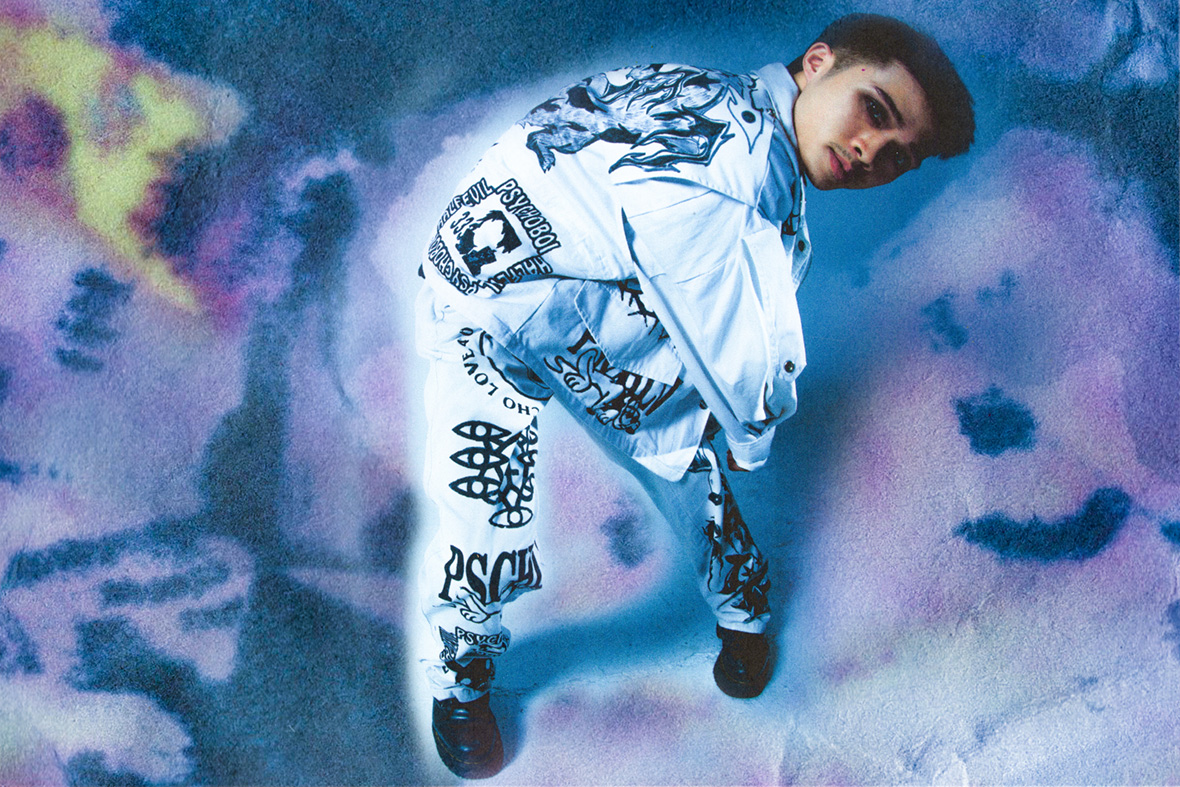
Looking to the Future
At the macro level, fashion companies need to be properly registered with the Vietnamese government, but below that, people often start up their own businesses in Vietnam without needing to jump through regulatory hurdles. The relaxed laws make it easy to get started, and Vietnam’s longtime position as an outsourcing country means skilled workers are readily available. It’s easy to find a seamstress or a production house to help with designs. This partially explains upcycling and custom culture’s growth here. Minh from Rockboy is the son of a working tailor, for example. As upcycling grows in the country, it has the opportunity to open up a lot of local employment opportunities.
But the loose business rules can also have downsides. Health, labor, and environmental safety are often overlooked. In rural Vietnam, where a lot of the upcycled materials come from, the burning of leftovers pollutes the air while buried polyester leeches into groundwater.
Vietnam seems uniquely positioned to lead in the world of custom and upcycled clothing. All the pieces are there, and younger designers are already making the moves. Events like that of Hidden Archive, aimed at teaching sustainability, forums like 1 of 1, and outreach by people like Le are feeding that growth, educating designers about how to take the next steps and also why they should take them. These types of resources are essential in furthering the upcycling movement.
Of course, without government action across the globe to deal with industrial, agricultural, and corporate offenders, there won’t be enough change. But a creative culture that embraces the issues of sustainability as part of their everyday lives sends a message to the world, proclaiming that this is the change we want to see.
3/升级回收有未来吗?
在越南,开办大规模的时装企业需要向政府做好注册登记,但如果是较小规模的企业,人们往往能避开复杂的监管障碍。宽松的法律使创业变得更容易,加上越南长期作为一个外包国家,有大量的熟练工人,轻松就能找到裁缝或工厂来生产,这也是升级回收和定制文化在当地发展如此迅速的原因之一。例如,Rockboy 品牌的 Minh 的父亲本身就是一名裁缝。随着升级回收在越南进一步发展,这将会为当地提供大量的就业机会。
然而,宽松的商业法规也有其弊端。健康、劳工和环境安全常常被人们所忽视。在越南农村有许多回收填充物的工厂,人们直接焚烧剩余废料,造成空气污染,或是将合成聚酯纤维的残渣倒入地下水中。
在定制和回收服装方面,越南有着得天独厚的优势。这里可以说是万事俱备,年轻的设计师纷纷加入行动,加上 Hidden Archive 这类旨在宣传可持续发展的活动、“1 of 1”之类的论坛以及 Ngoc Ha Thu Le 等人的推广努力,无一不在促进这项运动的发展,并引导着设计师的下一步行动,帮助他们理解之所以要持续的原因。所有这些资源都是推广回收文化和个性定制必不可少的因素。
当然,如果没有政府在全球范围内一致去打击工业、农业和企业方面的违法之徒,真正意义上的环保变革也难以到来。但是,在日常的创意文化中纳入可持续发展的理念,就能向世界传达一个信息:这才是我们所希望看到的变化。
Like our stories? Follow us on Facebook and Instagram.
Contributor: Mike Steyels
Photographer: Nguyen Hoang Long
Chinese Translation: Olivia Li

